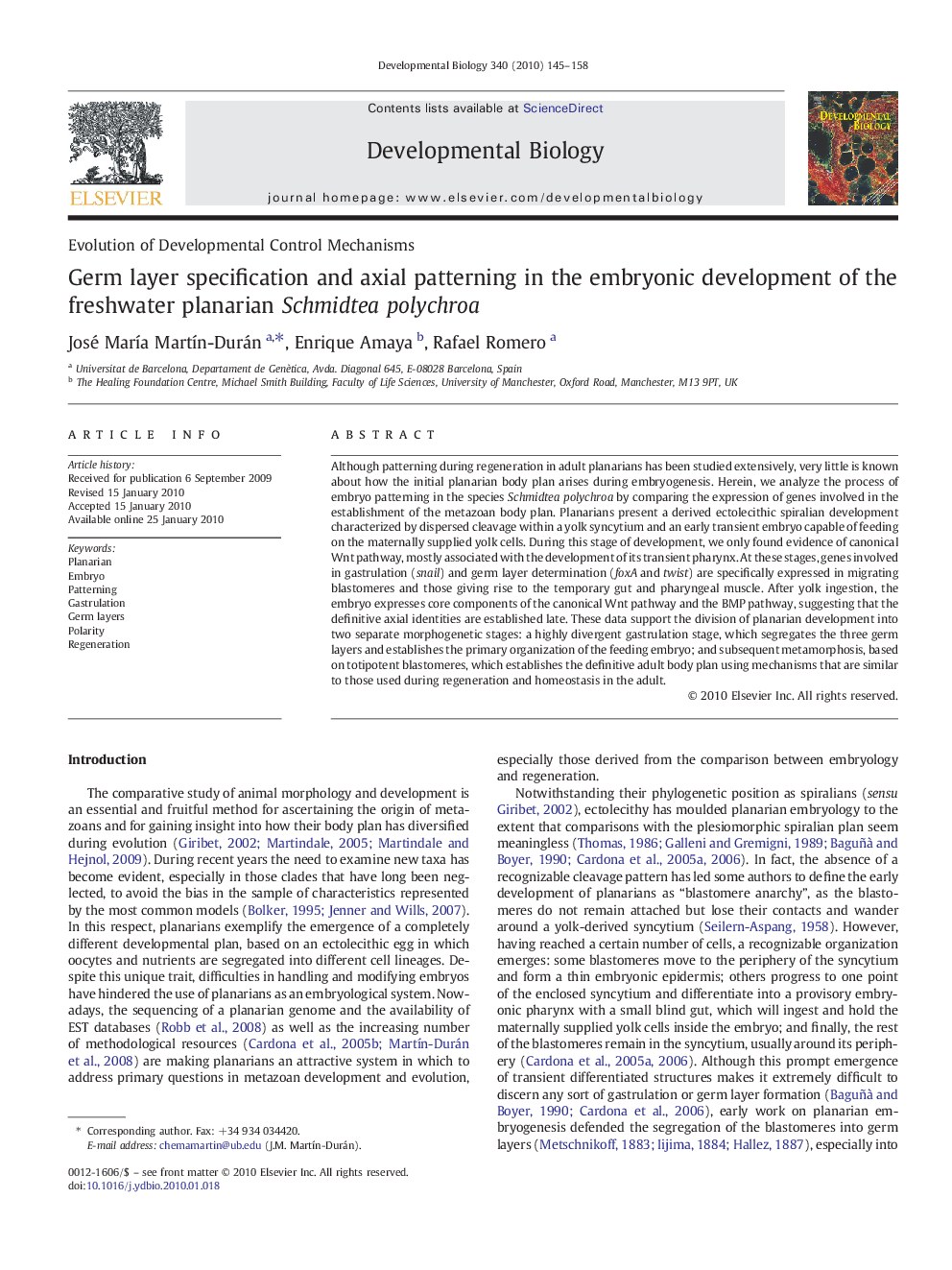| Article ID | Journal | Published Year | Pages | File Type |
|---|---|---|---|---|
| 10933135 | Developmental Biology | 2010 | 14 Pages |
Abstract
Although patterning during regeneration in adult planarians has been studied extensively, very little is known about how the initial planarian body plan arises during embryogenesis. Herein, we analyze the process of embryo patterning in the species Schmidtea polychroa by comparing the expression of genes involved in the establishment of the metazoan body plan. Planarians present a derived ectolecithic spiralian development characterized by dispersed cleavage within a yolk syncytium and an early transient embryo capable of feeding on the maternally supplied yolk cells. During this stage of development, we only found evidence of canonical Wnt pathway, mostly associated with the development of its transient pharynx. At these stages, genes involved in gastrulation (snail) and germ layer determination (foxA and twist) are specifically expressed in migrating blastomeres and those giving rise to the temporary gut and pharyngeal muscle. After yolk ingestion, the embryo expresses core components of the canonical Wnt pathway and the BMP pathway, suggesting that the definitive axial identities are established late. These data support the division of planarian development into two separate morphogenetic stages: a highly divergent gastrulation stage, which segregates the three germ layers and establishes the primary organization of the feeding embryo; and subsequent metamorphosis, based on totipotent blastomeres, which establishes the definitive adult body plan using mechanisms that are similar to those used during regeneration and homeostasis in the adult.
Related Topics
Life Sciences
Biochemistry, Genetics and Molecular Biology
Cell Biology
Authors
José MarÃa MartÃn-Durán, Enrique Amaya, Rafael Romero,
